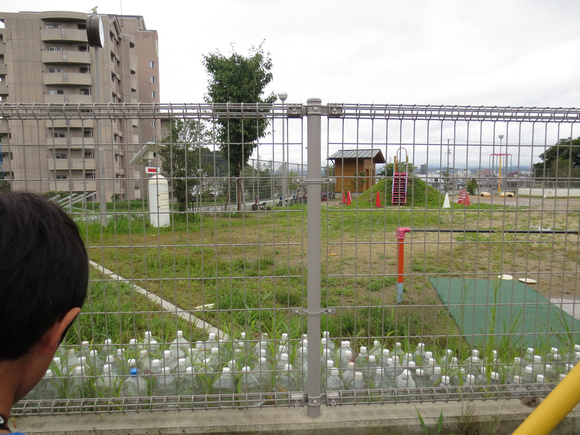通っていた保育園 (This Used to Be My Son's Playground)
震災から3年目の夏、震災の年の12月まで息子が通っていた保育園を訪れた。br/ 園庭は息子が避難した当時とあまり変わっていなかった。br/ 外からの放射能を遮る効果があるという水の入ったペットボトルが何本も置かれ、モニタリングポストの値は当時とあまり変わらない。br/ 草が生い茂った園庭。みんなここで遊んでいるのだろうか?br/ 震災前はこの広い園庭で、毎日泥だらけになって友達と遊んでいた。br/ 震災後は、外遊びの時間は短く制限され、保育園での生活の大部分を部屋の中で過ごしていた。br/ 3.11後、当たり前の子どもたちの日常が奪われてしまった。br/ br/ span class="small"strongマリリン/strongbr/ 福島県福島市 2014年8月 撮影/spanbr/ _______________________________br/ br/ In the summer three years after the disaster, I went to visit the daycare center my son used to attend until December 2011. The playground hadnrsquo;t changed much since we evacuated. They placed plastic bottles filled with water around the field in the belief that they block radiation. The level of radioactive contamination was about the same as when we left. Looking at the overgrown grass covering the field, I wondered, do the kids really play here? Before the disaster, they would play in this wide open field and get dirty without a care in the world. However, since then outdoor play has been cut very short, and daycare life takes place mostly indoors. The disaster of March 11 has deprived these children of a normal childhood.br/ br/ span class="small"strongMarilyn/strongbr/ Photo: Fukushima City, Fukushima Prefecture, August 2014/span


